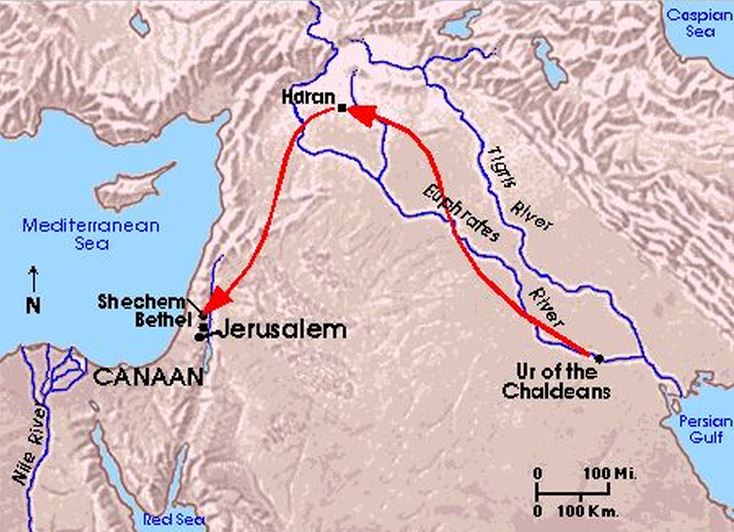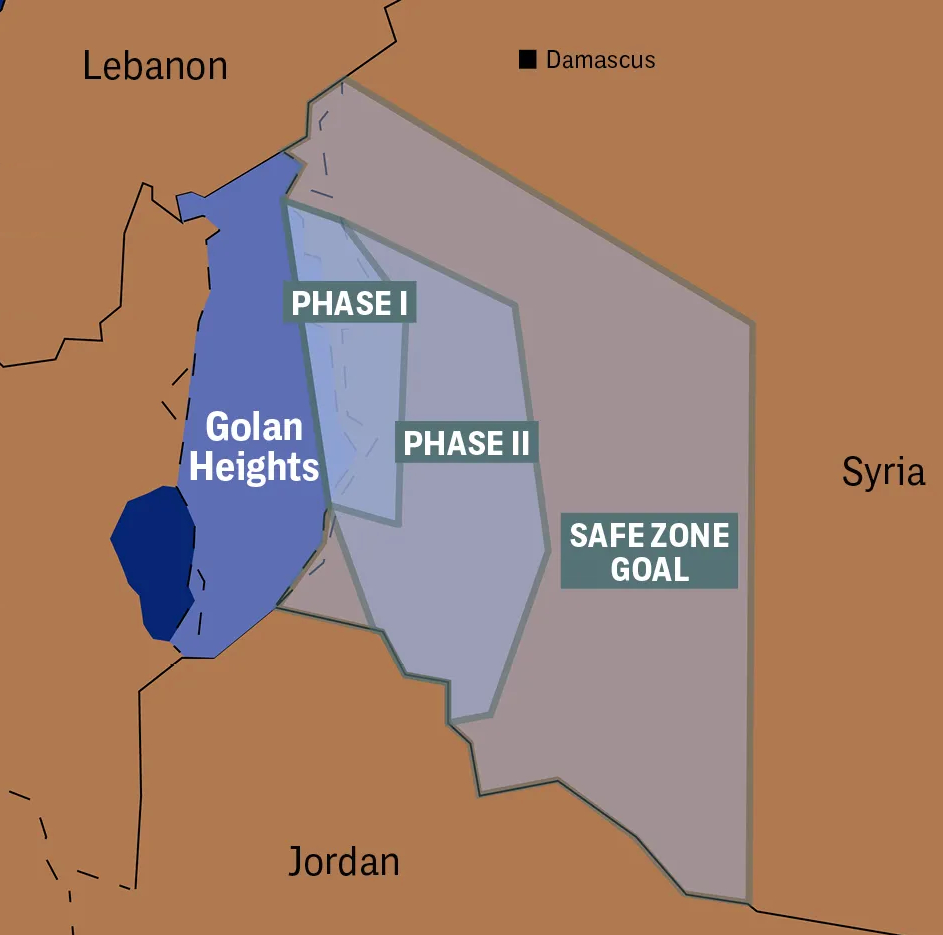|
The Assad family regime fell in December 2023 after half a century of terror. The regime’s fall was completed within a few weeks after Hayat Tahir al-Sham launched an offensive from Idlib province against forces loyal to the regime on November 28, 2024..
The question arose: How were the jihadists able to end that regime so quickly? We will leave the answer aside for now, as we are not military analysts, although we have been following and documenting the offensive.
One thing stood out.
There was much speculation on social media that the Israelis had a hand in this. A video seen on X-platform shows Israeli artillery on the Golan Heights firing shells towards Syria during the offensive. The video could be an indication that the Israelis supported the jihadists. This could bring back memories of wounded ISIL fighters in Israeli hospitals.
However, the Israelis have a long history with the country of Syria. We found a large number of social media users who do not know that there was never a peace agreement signed between the Israelis and Syria. Both sides have been at war since 1967.
What we have all seen happening in Syria since December 2023 is nothing more than the Israelis taking advantage of the fact that there was never a peace agreement signed. The Israelis have been doing this since the 1980s, when they bombed two alleged nuclear complexes twice. One of those complexes turned out to be a communal textile weaving mill.
It is striking that the Israelis also do not have a peace agreement with their northern neighbor, Lebanon.
 You have to go back to the Biblical period, when Lebanon and Syria were still part of Mesopotamia. You have to go back to the Biblical period, when Lebanon and Syria were still part of Mesopotamia.
The route that the Hebrew tribe followed, led by Abraham, started in Ur in modern-day Iraq to the northern part of modern-day Syria to enter the southern part of modern-day Lebanon, and from there, south to Canaan.
The episode described took place when Judaism did not even exist. It had yet to come into being, but after Abraham arrived in Canaan to join himself and his tribesmen with other tribes and then collectively accept ONE god through a covenant. Judaism sprouted from tribal beliefs, which have elements in Babylonian Talmudism.
 The Israeli idea of 'Greater Israel, which reemerged in October 2023, is based on Abraham's journey. It is a religionized motive that partly explains why Israelis refuse to leave Syria. It is nothing more than a similarity to the idea of the ISIL caliphate. The Israeli idea of 'Greater Israel, which reemerged in October 2023, is based on Abraham's journey. It is a religionized motive that partly explains why Israelis refuse to leave Syria. It is nothing more than a similarity to the idea of the ISIL caliphate.
A second motive for the Israelis to refuse to leave Syria – they even show a tendency to expand the occupied southern Syrian territory towards the Euphrates River – was the Iranian presence. This presence was attacked hundreds of times by the Israelis because there is no peace agreement with Syria. Yet, the origins are different.
On July 12, 1955, the Israelis signed the Atoms for Peace Agreement introduced by President Dwight D Eisenhower. The Israelis signed with the promise not to use a nuclear reactor for any purpose other than research.
The nuclear problem began when, in 1956, the first Israeli prime minister, David Ben-Gurion, who was obsessed with obtaining nuclear weapons, stated,
"What Einstein, Oppenheimer, and Teller, the three of them are Jews, made for the United States, could also be done by scientists in Israel, for their own people."
The technology and know-how that the United States provided at that time were copied by the Israelis to build a second, but secret, reactor. The problem they encountered was a lack of expertise in how to build a nuclear reactor and how to get nuclear material for the secret reactor. The latter was not a big problem. The Israeli agent in the US, Zalman Mordechai Shapiro, had just started stealing high-enriched uranium from the NUMEC facility in Apollo, Pensylvania.
In that same year, the Suez Canal Crisis broke out after the British-French controlled canal was nationalized by the then Egyptian President Gamal Adbel Nassr. The two countries wanted to regain possession of the canal and therefore asked the Israelis for help. In return, France would help the Israelis with the construction of Dimona. This lasted until the French discovered that they were involved in the construction of a reactor for the production of nuclear weapons.
Iran signed the AFP-treaty two years later and made no promises but kept to the treaty.
The Israelis managed to produce their first nuclear bomb in 1966-67. The declassification of sensitive government documents, that we know as the NUMEC Files, show that at least by 1975, the U.S. government was convinced the Israelis had nuclear weapons.
It is the Israelis' first nuclear bomb that prompted the international community to come up with a treaty, which we now know as the Nuclear Non-Proliferation Treaty. Iran signed that treaty in 1968, but the Israelis refused despite international pressure.
In 1978, the Iranian Revolution broke out. Khomeini returned from exile in France and banned the US-sponsored nuclear energy program. He considered the program un-Islamic but changed his mind under pressure from the Iranian Revolutionary Guards amid the Iran-Iraq war that lasted eight years.
The Israelis were already the first and (still) the only nuclear power in the Middle East despite their promise not to be the first to introduce the militarization of nuclear technology.
In 2007, Menachem Begin stated, "Be sure that no enemy has a reactor." It is hasbara. In plain words: to ensure being the only nuclear power in the region.
If we put "enemy" in today's context, the term belongs to the Israeli politics of conflation. It refers to any country in the region, even beyond, that is not siding with the Israelis. It is not without reason that they have inter-continental ballistic missiles in their arsenal.
 We have all been able to follow how thoroughly the Israelis have been wreaking havoc in Gaza. We have all been able to see this since December 2024 in Syria, where they are busy destroying all Syrian military storage facilities and warning the new rulers in Syria not to set up a national army. We have all been able to follow how thoroughly the Israelis have been wreaking havoc in Gaza. We have all been able to see this since December 2024 in Syria, where they are busy destroying all Syrian military storage facilities and warning the new rulers in Syria not to set up a national army.
According to reports on social media, the Israelis are said to have disabled the entire air defense system, although no definitive proof has been provided. There are clear indications that the Syrian radar system was, at the very least, inadequate.
Three motives may explain why the Israelis do not want an army in Syria.
-
To prevent attacks from Syria, even though there have never been attacks from this country. Yet the Israelis are out to occupy almost all of South Syria and have already indicated that they will never leave those areas, which is nothing more than annexation.
-
The intended expansion of those so-called security zones shows itself to be an attempt for further expansion in the direction of the Euphrates River. It suggests that the Israelis want to create a wide corridor.
-
The Israelis want at least a shorter route for attacks on Iran. They must now take a detour through Saudi Arabian airspace, making the country a target for Iranian retaliation.
So, the Israeli stance on Syria is no longer because of Iran or Hezbollah. It is because of their messianic desire for a Greater Israel.
The Israelis already created Hezbollah when they occupied Southern Lebanon in 1981. The Israelis created Hamas when they occupied Gaza from 1956 to 2005. And now, the Israelis have created the existence of the Islamic Resistance Front in Syria that will fight the partitioning of the south by the.Israelis.
|


 You have to go back to the Biblical period, when Lebanon and Syria were still part of Mesopotamia.
You have to go back to the Biblical period, when Lebanon and Syria were still part of Mesopotamia. The Israeli idea of 'Greater Israel, which reemerged in October 2023, is based on Abraham's journey. It is a religionized motive that partly explains why Israelis refuse to leave Syria. It is nothing more than a similarity to the idea of the ISIL caliphate.
The Israeli idea of 'Greater Israel, which reemerged in October 2023, is based on Abraham's journey. It is a religionized motive that partly explains why Israelis refuse to leave Syria. It is nothing more than a similarity to the idea of the ISIL caliphate. We have all been able to follow how thoroughly the Israelis have been wreaking havoc in Gaza. We have all been able to see this since December 2024 in Syria, where they are busy destroying all Syrian military storage facilities and warning the new rulers in Syria not to set up a national army.
We have all been able to follow how thoroughly the Israelis have been wreaking havoc in Gaza. We have all been able to see this since December 2024 in Syria, where they are busy destroying all Syrian military storage facilities and warning the new rulers in Syria not to set up a national army.